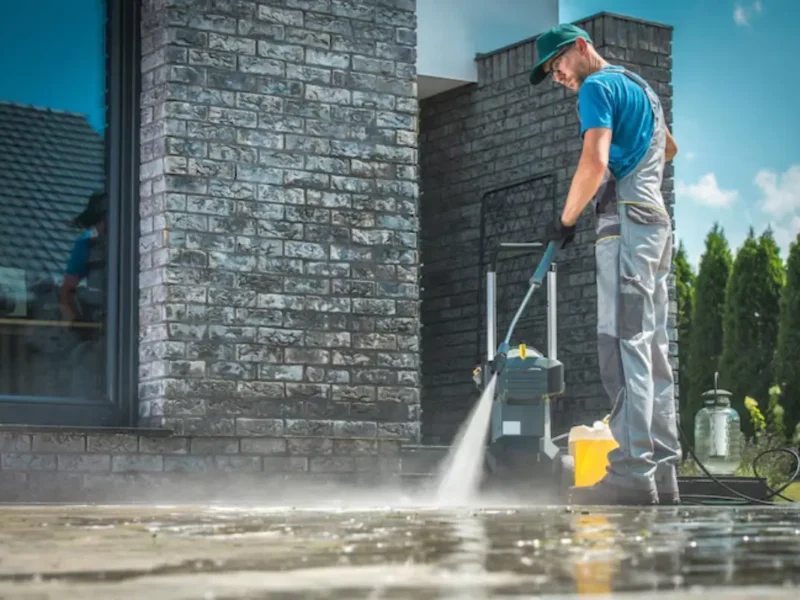A roof takes a beating from wind, sun, rain, and other environmental factors. Often, more than a repair is needed, and a replacement is the better choice.
Fortunately, local roofing contractors are here to help. Understanding New Orleans building codes is essential for the safety and longevity of your roof.
Requirements for Secondary Leak Protection
When planning a roof replacement project, homeowners in New Orleans must be aware of local building codes and regulations. These rules are designed to preserve the roof system’s lifetime while safeguarding its occupants’ health and safety.
These laws dictate various elements, including the construction materials used in buildings and their fire resistance capabilities. They also limit maximum room sizes and require that facilities be accessible to people with disabilities. They also dictate how roofing systems are installed and how structures are sealed.
Since Hurricane Katrina, many of these requirements have been tightened. Some of these changes specifically target the area’s most vulnerable buildings, such as those in coastal Louisiana. Now, they have better-performing roofs thanks to stricter building codes and more thorough inspections, according to the Insurance Institute for Business & Home Safety (IBHS).
These improved roofs are helping to attract property insurance carriers to the state, which has long struggled to find financially viable options for homeowners due to the high risk of catastrophic hurricane-related losses.
Other code amendments include changing nailing patterns to decrease the number of lost tiles during high wind events and requiring secondary barriers that prevent the escape of water from a damaged roof deck. These improvements may increase construction costs and require more energy to operate a building, raising utility bills.
Slope Requirements
A roof replacement job may take a variety of times to complete. The time required for your roofing project could range from a few days to several weeks, depending on its size and complexity. However, it is essential to note that unexpected weather events or other unforeseen circumstances can prolong the duration of your roof project.
While the ICC sets national standards for building codes, local jurisdictions can modify them better to fit the climate and conditions in their area. It includes hurricane-prone regions, where stricter regulations can help protect homes and businesses from damage caused by strong winds and heavy rain.
For example, Louisiana’s building codes require that residential structures be elevated to a certain height above sea level, which can help keep them safe from floods and storm surges.
They also need roofs designed to withstand strong winds, using suitable materials and fasteners to prevent them from blowing off in a storm. The code even requires that homes have storm shutters to shield windows and doors from windblown debris.
Another requirement in the state’s new building codes is that reroofing projects comply with the requirements of Section 1507. The roof covering must be replaced with a secondary drainage system or scuppers. It must be installed with a minimum slope of one-fourth unit vertical in 12 horizontal units.
Drainage
A New Orleans commercial roofing replacement can be a time-consuming process. That’s why it’s crucial to stay updated with local building codes. Fines or other penalties may be imposed for not adhering to these standards.
The state’s new law will make some distinctions in the building standards that must be adhered to for buildings in the southern, more hurricane-prone areas and those in the northern, less wind-prone part of the state. Insurance companies have praised the move, which is intended to help buildings better withstand hurricane-force winds.
It is one of the most critical aspects of the new building code. It requires a roof to be designed with sufficient slope to drain within 48 hours of precipitation. If not, water can pool on the top, which can cause structural members to deflect and possibly collapse the roof. It is scary for homes and businesses with occupants, as falling debris could injure or kill people.
Another important aspect of this code is the requirement for a secondary drain or scupper system. The code also includes an exception that states that existing roofs do not have to meet the drainage requirements if they already provide positive roof drainage.
This exception was added due to concerns of the National Roofing Contractors Association. However, the code requires a reroofing contractor to document this with location-verified/geo-tagged photographic documentation.
Ventilation
Keeping your roof properly ventilated is essential for its long lifespan. It helps to prevent the build-up of excessive heat and moisture, extending its life and improving its performance. Moreover, it helps to control indoor humidity levels, preventing mold and mildew formation that can affect the health of your building’s occupants.
Several ventilation systems are available, but the best one for your building depends on the climate and size of your roof. The most typical situation is a ridge vent, a continuous vent that runs along the top of the roof to let cool air enter the eaves and hot air exit. This system is often combined with soffit vents to create optimal airflow through the attic space.
Another common type of venting is a powered vent, which actively uses fans to expel warm air from the attic. This system is advantageous in areas with hot and humid summers since it can help to keep the attic cooler by directing outside air into the vents.
A sound ventilation system can also reduce utility costs and maintain a cooler attic, contributing to increased energy efficiency. If you’re thinking about a new commercial roof, consider the benefits of ventilation to extend its life and improve the performance of your building.



